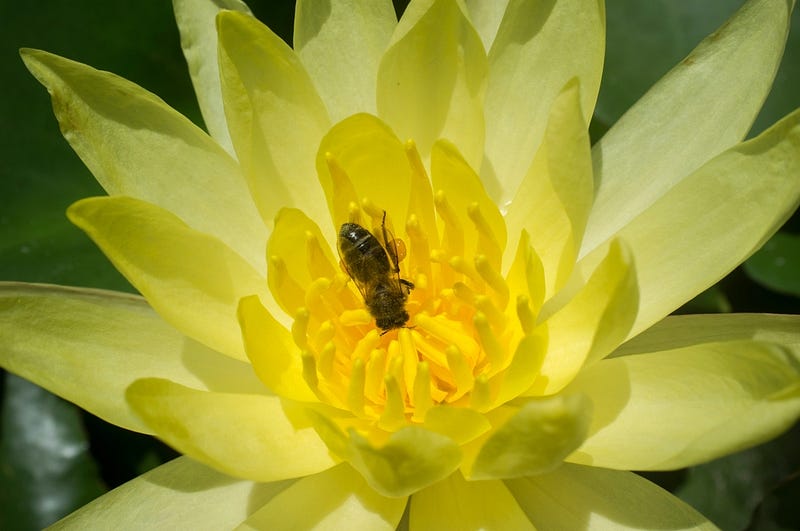Impact of Urbanization on Pollinators: Behavioral Changes Explored
Written on
Understanding Pollinator Behavior in Urban Contexts
The rapid growth of the human population has far-reaching effects on our environment. This expansion contributes to climate change, disrupts natural ecosystems, and leads to pollution. A significant outcome of this population increase is the transformation of land use—over 50% of the Earth's land has been repurposed for human activity, particularly urban development.
As urban areas expand, the populations of pollinators are declining. Pollinators, such as bees, birds, butterflies, hoverflies, and bats, are essential for fertilizing plants by transferring pollen from male to female flower parts. This informative video outlines the fundamentals of pollination (0:12–3:47):
The decline in pollinator numbers within cities can largely be attributed to a reduced variety and abundance of plants compared to rural settings. Not all species of pollinators are equipped to adapt to these changes, leading to food scarcity.
Moreover, urbanization not only decreases the number of pollinators but also alters their behavior. Here are several key behavioral shifts observed in urban pollinators:
1. Increased Short-Term Specialization
One notable change is the rise in short-term specialization among pollinators in urban areas. While pollinators in rural environments typically concentrate on one plant species per foraging trip, urban pollinators exhibit an even stronger tendency towards this behavior. This may result from the limited variety of plant species available, compelling pollinators to focus on specific flowers, thereby enhancing the likelihood of proper pollen transfer.
This video illustrates how a pollinator prioritizes a single flower during its foraging journey:
2. Enhanced Long-Term Specialization
Another shift is the heightened long-term specialization in urban settings. While specialization is common among different visits in rural areas, urban pollinators also demonstrate this behavior within the same species. Factors such as competition for food and the availability of resources play a significant role in shaping pollinator preferences in urban landscapes.
3. Preference for Invasive and Exotic Flora
Urbanization has led to a preference among pollinators for visiting invasive or exotic plants over native species. Invasive plants, which are non-native and detrimental to local ecosystems, become more common in urban areas, resulting in a reduced frequency of visits to native plants by pollinators. This trend facilitates the spread of invasive species, further impacting local biodiversity.

4. Prolonged Foraging Times
Lastly, urban pollinators tend to spend more time on individual flowers. Extended foraging duration is often a response to higher nectar availability, which can occur when fewer competitors are present or when environmental conditions favor nectar production. This behavior enables pollinators to gather not only more food but also additional pollen.
Conclusion
In summary, urbanization significantly alters pollinator behavior, leading to increased short-term and long-term specialization, longer foraging times, and a preference for invasive and exotic plants.
Taking Action for Pollinators
Here are some actionable steps you can take to support pollinators in urban environments:
- Plant native species in your gardens instead of exotic varieties.
- Cultivate flowers on balconies and patios.
- Choose nectar-rich plants, such as hibiscus, sunflowers, and torch lilies.
- Avoid using pesticides and harmful chemicals that could negatively impact pollinators.
Do you have additional suggestions on how we can help? Please share your ideas in the comments; your input can inspire others to take action!
References
This article draws upon the research of Suni, S., Hall, E., Bahu, E., & Hayes, H. (2022). "Urbanization increases floral specialization of pollinators." Ecology and Evolution, 12(3), e8619.